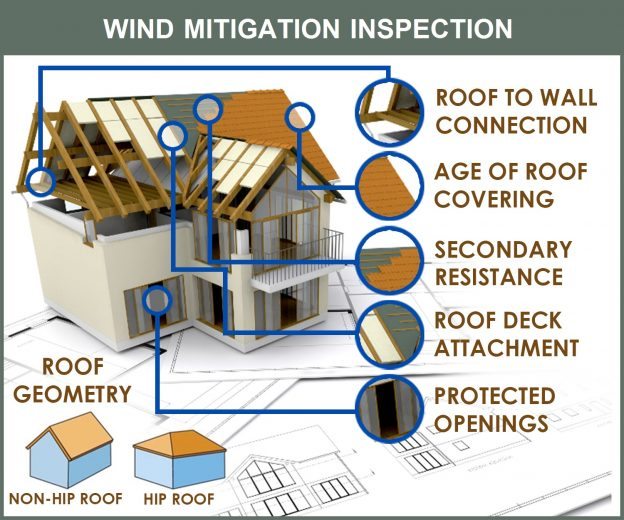What is a Wind Mitigation Inspection?

A wind mitigation inspection is an essential step in ensuring the safety and durability of your home in Florida. By assessing the structural integrity of your property, this inspection helps identify potential risks and vulnerabilities to withstand strong winds and storms. With our expert team at Florida Certified Home Inspection #1, you can trust that your home will be thoroughly examined, providing you with the peace of mind you deserve.
Benefits of a Wind Mitigation Inspection
- Lowered Insurance Premiums
- Comfort and Security
- Avoid Expensive Repairs or Extensive Damage
Building Code
Whether your home was built in compliance with the Florida Building Code 2001 or later or South Florida Building Code 94.
Roof Coverings
Type of roof coverings your home has – that is, the material your roof is made of: asphalt / fiberglass shingle; concrete / clay / tile; metal; built up; membrane; or other. If your roof has been replaced recently, provide the permit you had for the construction; it’ll help the inspector accurately assess your roof. The inspector will also determine whether your roof coverings are approved by Florida building codes at the time of installation.
Roof-deck Attachment
Determines how well your roof deck is secured to the truss/rafter and the strength of the attachment (in most cases, option A is the weakest and C is the strongest). The inspector will even look at the length of the nails that attach the roof sheathing to the roof truss / rafter – the longer the nails (8d are the longest) and the closer they are together (6 inches is preferred), the better.
Roof-to-wall Attachment
This indicates how well your roof is attached to the walls of your home. The question offers eight types of connections: (A) toenails, (B) clips, (C) single wraps, (D) double wraps, (E) anchor bolt, (F) other, (G) unknown, and (H) no attic access. Double wraps are considered the strongest type of connection; toenails are considered the weakest.
Roof Geometry
Roof geometry: This is the shape of your roof and it has a big impact on how well your home withstands strong winds. The inspection form offers three roof shapes: hip roof, flat roof, and other. Hip roofs slope down on all sides and help resist clashes with hurricane winds. For that reason, they tend to get a bigger premium discount.
Secondary Water Resistance
Determines if your home has a protective layer under the primary layer of the roof (like the shingles). Think of it as that light rain jacket you wear even though you have an umbrella. The inspection form will note whether your roof has SWR or not.
Opening Protection
The final part of the wind mitigation inspection form considers “glazed openings” (i.e., openings with windows or glass) and “non-glazed openings” (e.g., entry doors and garage doors) and how impact resistant they are. For instance, they will check for shatterproof windows, bracing on the garage door, hurricane-rated doors, and storm shutters. Without these measures, flying debris can compromise your home’s pressure barrier. Consider putting up hurricane shutters before the inspector arrives to make sure you get this credit.


